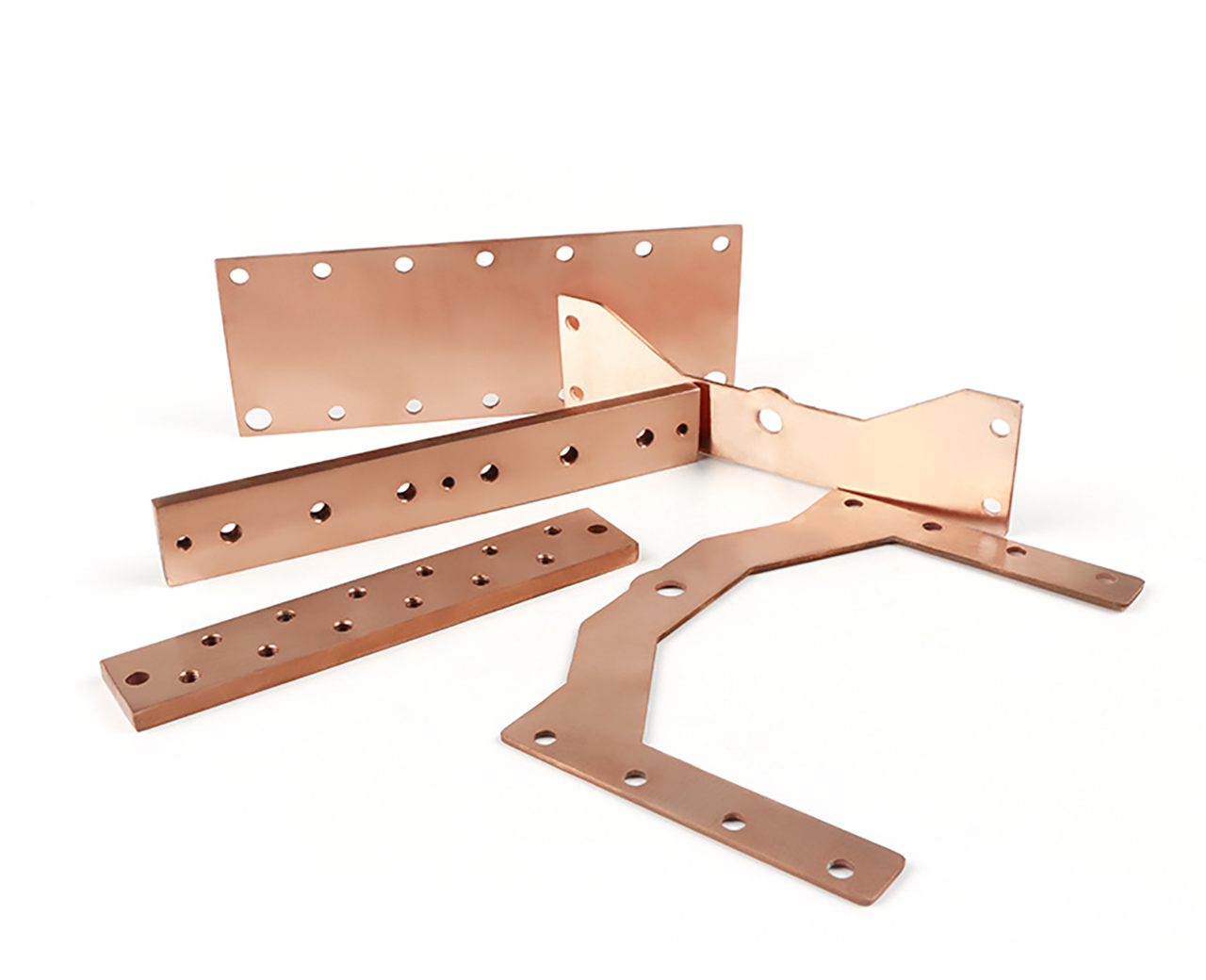2025-10-16 09:41:26
A copper busbar is a fundamental component in modern electrical distribution systems, designed to efficiently conduct large amounts of electrical current between equipment, devices, and circuits. For engineers, procurement professionals, and industrial operators, understanding what is copper busbar and how it functions is crucial for ensuring reliable, safe, and efficient power delivery.
Copper busbars are commonly made from high-purity copper due to its exceptional electrical conductivity, mechanical strength, and thermal performance. They are widely used in industries ranging from renewable energy and electric vehicles to industrial switchgear and commercial electrical panels. Unlike conventional cabling, copper busbars provide a compact, low-resistance solution that simplifies wiring while minimizing energy loss.

Copper has one of the highest electrical conductivities among common metals, which allows electrical copper bus bars to carry high currents with minimal resistive losses. This ensures efficient power distribution, even in high-demand industrial applications.
Copper busbars can withstand higher temperatures compared to many alternative materials. This reduces the risk of overheating, maintains system stability, and prolongs the service life of connected devices.
The mechanical robustness of copper allows copper buss bars to maintain structural integrity under vibration, bending, or mechanical stress, making them ideal for heavy-duty electrical installations.
Copper naturally resists corrosion, but in harsh environments, it can be coated or plated to further enhance durability. Insulated busbars and tinned copper coatings prevent oxidation, reduce maintenance requirements, and improve safety.
Unlike multiple wires or cables, copper busbars provide a space-saving solution with modular design possibilities. This facilitates easy installation, inspection, and future expansion.
Understanding how to make a copper busbar is important for buyers and engineers to evaluate quality and ensure compliance with industrial standards. The typical manufacturing process involves several key steps:
High-purity copper (commonly ≥ 99.9%)
Alloyed copper for special applications
Optional coatings: tinned, silver-plated, or nickel-plated
Copper sheets or rods are cut to the required length and dimensions.
Advanced CNC machines, laser cutting, or stamping may be used for precision.
Copper busbars can be bent into required shapes to fit panels, cabinets, or battery modules.
Careful forming ensures no cracks or mechanical stress points.
Insulated busbars are coated with PVC, epoxy, or heat-shrink insulation.
Tinned surfaces are applied for corrosion resistance and solderability.
Electrical conductivity tests
Dimensional verification
Thermal performance evaluation
Industrial applications require different types of copper busbars depending on current requirements, space, and system design. Common types include:
Single-piece copper strips with high current-carrying capacity
Suitable for high-voltage switchgear, industrial distribution, and battery packs
Braided or laminated strands allowing flexibility
Ideal for systems with vibration, thermal expansion, or movement
Often used in Battery Bus Bar connectors and EV applications
Coated with non-conductive materials for safety
Reduces risk of short circuits and accidental contact
Lightweight yet mechanically strong
Used in large switchgear and high-current industrial applications
Copper busbars serve as a centralized conductor in electrical panels, connecting multiple devices while maintaining efficient power flow.
Current Distribution: They divide total system current to multiple loads evenly.
Voltage Stability: Low resistance ensures minimal voltage drop, even at high currents.
Safety: Insulated or plated surfaces reduce electrical hazards and oxidation.
For battery systems, copper busbars provide stable connections between cells, modules, and battery management systems, ensuring balanced power distribution and reliability.
Copper busbars are widely used in:
Industrial Switchgear and Panels: Efficient distribution of electricity in factories, plants, and commercial buildings.
Renewable Energy Systems: Solar, wind, and energy storage systems utilize busbars for high-current connections.
Electric Vehicles (EVs): Flexible copper busbars connect battery cells and modules while accommodating vibrations.
Data Centers: High-density power distribution and modular systems.
Battery Packs: Copper busbar battery assemblies ensure uniform voltage and reliable current paths.
When selecting or installing copper busbars, several factors must be considered:
Current Rating: Determine the maximum continuous current and peak current.
Voltage Drop: Ensure busbar dimensions provide minimal voltage drop across length.
Thermal Management: Check temperature rise under load; consider spacing and airflow.
Mechanical Support: Long or heavy busbars may require braces to prevent sagging or vibration damage.
Safety and Insulation: Use insulated busbars where accidental contact is possible.
Regular maintenance ensures long-term performance of copper busbars:
Clean surfaces periodically to remove oxidation or dust
Inspect for loose connections and mechanical wear
For exposed environments, use tinned copper busbar to resist corrosion
Ensure insulation remains intact on coated or insulated busbars
For overseas buyers and industrial clients, sourcing high-quality copper busbars from a reliable factory ensures:
Compliance with IEC, UL, and ISO standards
Custom dimensions and shapes to match electrical layouts
Consistent conductivity and low resistance
OEM and bulk supply capability
Our factory specializes in producing copper busbar, insulated busbar, electrical copper bus bar, and custom designs for industrial and renewable energy applications, ensuring both high performance and competitive pricing.
A copper busbar is more than just a conductor; it is a critical component that enhances the efficiency, safety, and reliability of electrical systems. Understanding what is copper busbar, its properties, how it is manufactured (how to make a copper busbar), and the correct selection process is essential for engineers, OEMs, and industrial procurement professionals.